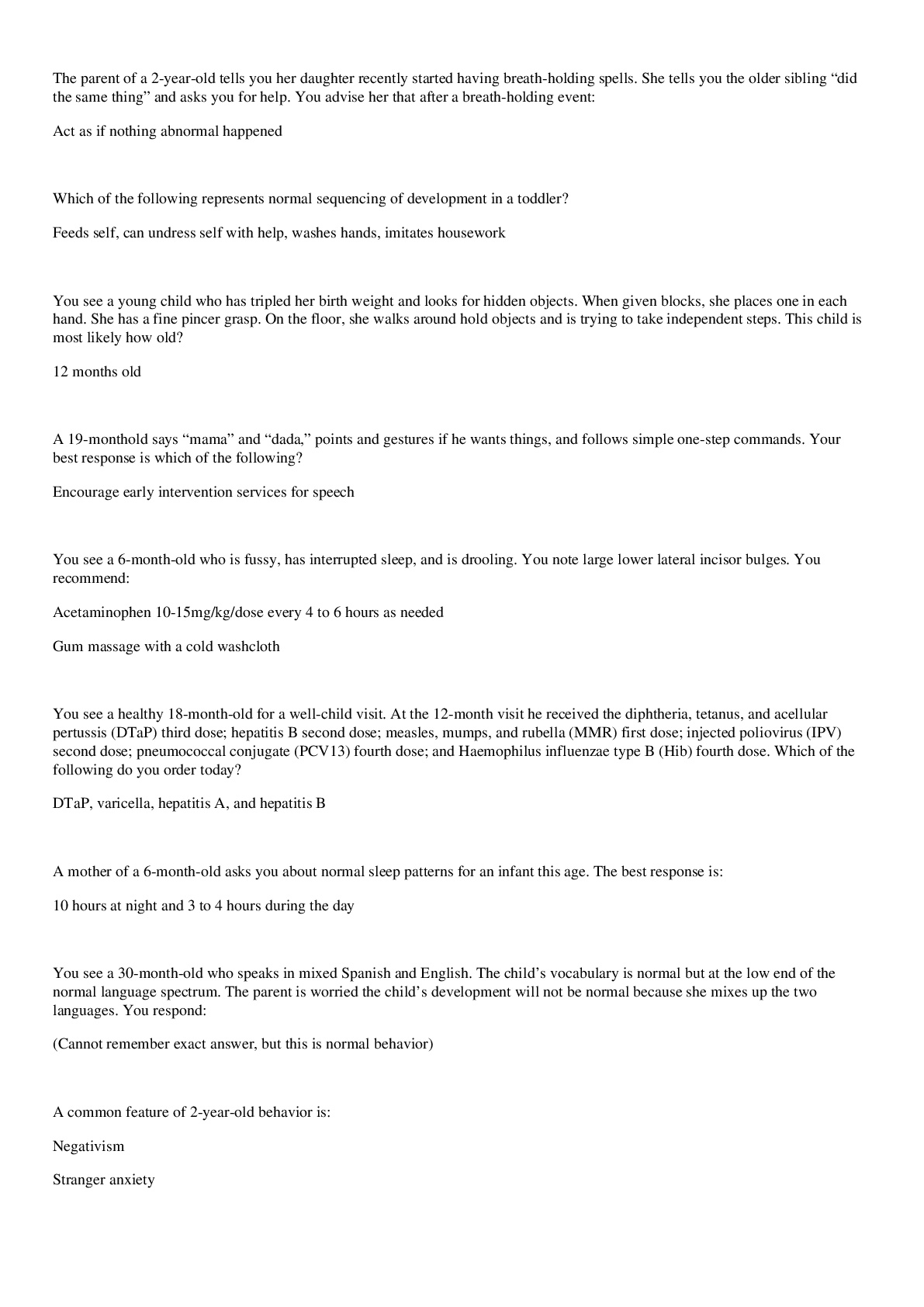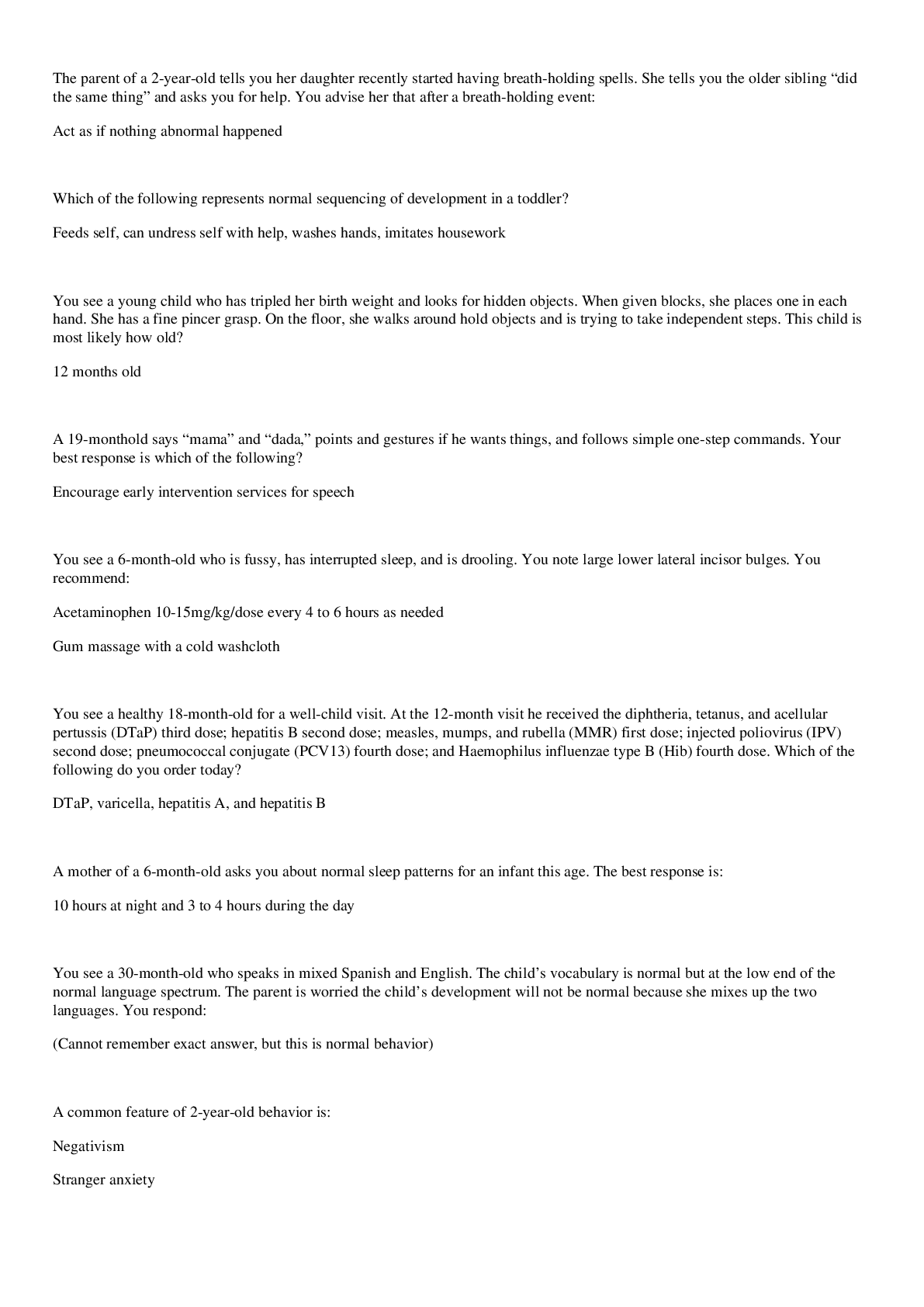NURS 6541 Week 2 Quiz- Question with Answers( Rated A+)
Document Content and Description Below
1. The parent of a 2-year-old tells you her daughter recently started having breath-holding spells. She tells you the older sibling “did the same thing” and asks you for help. You advise her tha... t after a breath-holding event: a. Act as if nothing abnormal happened 2. Which of the following represents normal sequencing of development in a toddler? a. Feeds self, can undress self with help, washes hands, imitates housework 3. You see a young child who has tripled her birth weight and looks for hidden objects. When given blocks, she places one in each hand. She has a fine pincer grasp. On the floor, she walks around hold objects and is trying to take independent steps. This child is most likely how old? a. 12 months old 4. A 19-monthold says “mama” and “dada,” points and gestures if he wants things, and follows simple one-step commands. Your best response is which of the following? a. Encourage early intervention services for speech 5. You see a 6-month-old who is fussy, has interrupted sleep, and is drooling. You note large lower lateral incisor bulges. You recommend: a. Acetaminophen 10-15mg/kg/dose every 4 to 6 hours as needed b. Gum massage with a cold washcloth 6. You see a healthy 18-month-old for a well-child visit. At the 12-month visit he received the diphtheria, tetanus, and acellular pertussis (DTaP) third dose; hepatitis B second dose; measles, mumps, and rubella (MMR) first dose; injected poliovirus (IPV) second dose; pneumococcal conjugate (PCV13) fourth dose; and Haemophilus influenzae type B (Hib) fourth dose. Which of the following do you order today? a. DTaP, varicella, hepatitis A, and hepatitis B 7. A mother of a 6-month-old asks you about normal sleep patterns for an infant this age. The best response is: a. 10 hours at night and 3 to 4 hours during the day 8. You see a 30-month-old who speaks in mixed Spanish and English. The child’s vocabulary is normal but at the low end of the normal language spectrum. The parent is worried the child’s development will not be normal because she mixes up the two languages. You respond: a. (Cannot remember exact answer, but this is normal behavior) 9. A common feature of 2-year-old behavior is: a. Negativism b. Stranger anxiety 10. You see a 4-year-old for a well-child visit. He has received four diphtheria, tetanus, and acellular pertussis vaccines (DTaP); three injected polio vaccines (IPV); one measles, mumps, and rubella vaccine (MMR); one varicella vaccine; and two hepatitis B (Hep B) vaccines. What do you order today? a. DTaP, IPV, MMR, and Varivax [Show More]
Last updated: 2 years ago
Preview 1 out of 2 pages

Buy this document to get the full access instantly
Instant Download Access after purchase
Buy NowInstant download
We Accept:

Reviews( 0 )
$8.00
Can't find what you want? Try our AI powered Search
Document information
Connected school, study & course
About the document
Uploaded On
Apr 29, 2020
Number of pages
2
Written in
Additional information
This document has been written for:
Uploaded
Apr 29, 2020
Downloads
0
Views
143















.png)






